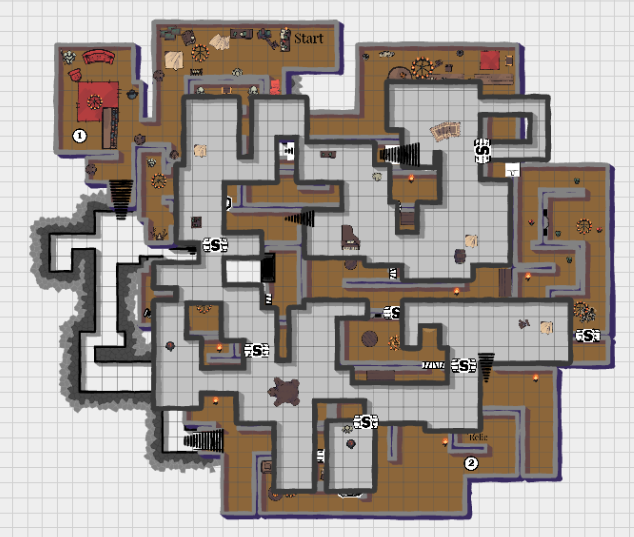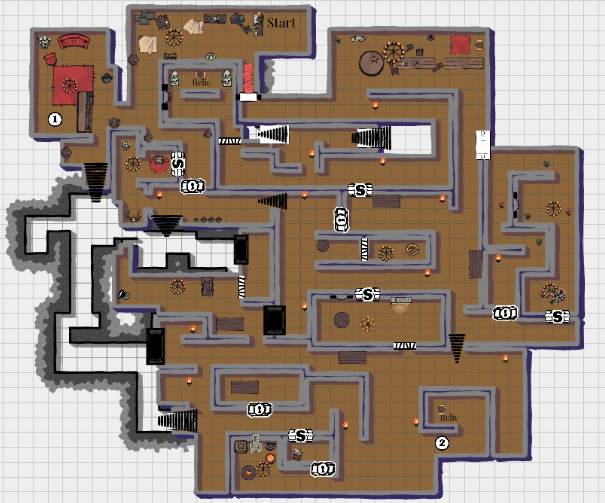Creative Director, Game Designer, UI and Level Designer
As the Creative Director, I was responsible for defining the game’s overall vision, aesthetic, and feel, ensuring a cohesive and immersive experience. I leveraged my cross-disciplinary skill set and prior game development experience to guide the project, aligning art, gameplay, and narrative into a unified direction.
In addition to being the Creative Director, I was a Game designer who collaborated with my team to develop the core mechanics, systems, and unique features. I played a key role in shaping engaging gameplay loops, balancing mechanics, and refining player interactions to create a compelling experience. I also helped create UI assets and the overall UI.
Finally, as the level designer, I decorated, focused on player pacing and engagement and guidance. My goal for the level was to craft a space that was visually engaging and make the player feel lost, but not have repetitive scenes.
Game Design
As one of the Game Designers for Moodcaster, I had a key role in every aspect of the design process.
One of the most crucial parts of the game was developing spells that felt natural to use based on each character’s emotion, as well as balancing the cooldowns for those spells. When designing them, I considered the basic emotions people commonly express. This led me to focus on the six core emotions: happiness, sadness, anger, disgust, fear, and surprise.
For each spell, I thought about the psychological associations of each emotion and used colour theory to help decide both the spell’s effect and its visual presentation. For example:
Happiness is a peaceful state most often associated with the colour yellow. If the player was in a "Happy" state (shown as a smile), they would light up the room and heal themselves. However, because they are lighting up an otherwise dark level, they also become more noticeable to enemies.
Sadness was used to represent feelings of guilt or regret. Since it’s difficult to make a player feel sad during a short demo, I made the Sadness spell very powerful. It attacks any nearby enemies, but also leaves a puddle at the player’s feet, slowing them down. Sadness is associated with the colour blue, which is reflected in the visual effects.
Fear is a very primal emotion. In most video games, players avoid showing fear, so I wanted the Fear spell to have a tradeoff. Using it hurts the player slightly, making fear a negative effect. However, because Moodcaster features horror elements and scary monsters, I didn't want players to feel overly punished for being scared. To balance it, the Fear spell also hides the player from nearby monsters, offering a strategic advantage.
These spell usuages were also considered while making the level, enemy placements and any sort of events that would happen.
Paper Level Design
White box
Top LevelFinal Iteration
Level Design
Middle LevelMoodcaster originally had 3 stories for the map, where each had a specific colour palette, aesthetic and bosses. However, I reduced it to two smaller levels due to time constraints and memory storage. I used the middle level and the basement level. The paper level went through multiple iterations of layouts, changing the aesthetics, layout, and specified rooms.
For the white box, I created it in unity using ProBuilder. I added cubes to block out how the level will look for major furniture obstacles. The white box was to big to navigate, so I scaled it smaller for the player to feel cozy and more intimate for the player. I took out the stairs that lead to the basement so the player has less control of moving from level to level. I did create the top layer, but took it out due to the map being way to big and complex for the player to explore.
The final iteration of Moodcaster focused on polishing all the fine details: adding 3D models and textures, ensuring that lighting and reflections worked properly, and inserting goofy pictures into the frames. Each room has a specific theme—study, kitchen, dining room, etc.—which I carried through the design and furniture choices. The top level, filled with fog, is where the main monster, Lockjaw, can navigate freely. The downstairs area is designed to feel more like a maze, making the player feel more lost compared to the main floor. It’s also where Cerberus resides, with a main room dedicated to battling them.
Basement Level




